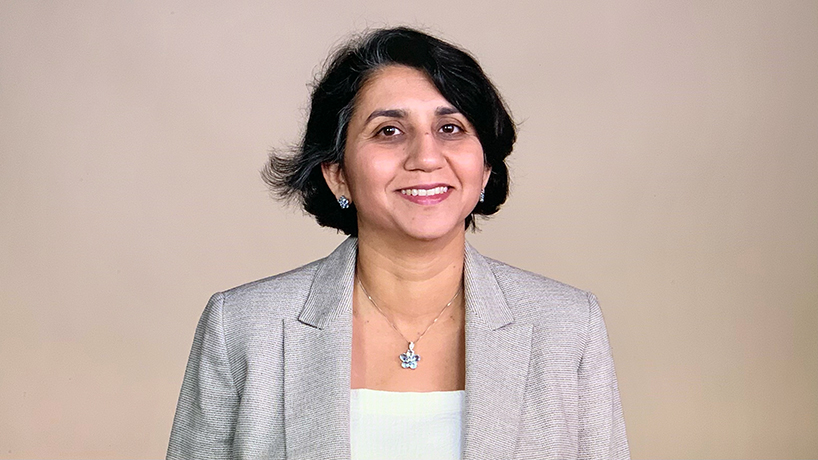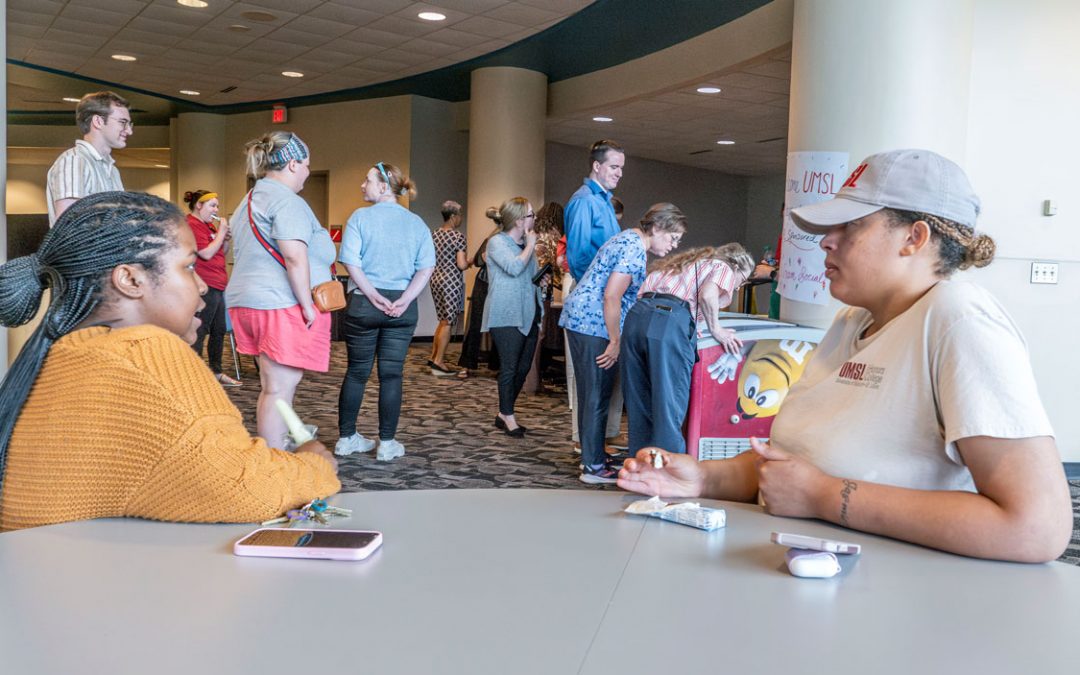
College of Business Administration Associate Professor Seemantini Pathak examines everything from how companies learn, to how boards monitor and advise CEOs, to how the characteristics of founders and other company leaders influence organizational decisions and their outcomes. In June, the Journal of Business Venturing published a paper written by Pathak and Assistant Professor Brandon Ofem, “How cultural tightness interacts with gender in founding teams: Insights from the commercialization of social ventures.” (Photo by August Jennewein)
It’s not surprising that Seemantini Pathak didn’t have many opportunities to study the humanities or human behavior while working toward her bachelor’s degree in chemical engineering at Maharaja Sayajirao University of Baroda in Vadodara, India.
But it was that experience that started her on the path to studying management and decision-making.
“It made me really curious about how organizations work and how human beings operate in organizations,” said the associate professor of management, explaining how she went on to business school, then work as a management consultant. “I realized I really enjoyed examining why companies make the decisions they do. It’s not always the most rational thing. Psychology plays a big role. Biases play a big role.”
That insight led Pathak to earn a PhD in business administration and secure a position in the College of Business Administration at the University of Missouri–St. Louis. She’s continued to investigate the inner workings of business, specializing in corporate governance. Pathak examines everything from how companies learn, to how boards monitor and advise CEOs, to how the characteristics of founders and other company leaders influence organizational decisions and their outcomes.
In June, the Journal of Business Venturing published a paper written by Pathak and Assistant Professor Brandon Ofem, “How cultural tightness interacts with gender in founding teams: Insights from the commercialization of social ventures.” The paper, which the duo co-authored with two other researchers, Ikenna Uzuegbunam of Howard University and Amy Taylor-Bianco of Ohio University, focused on the impact of founding teams’ gender on commercialization in tight and loose cultures across the world.
“Many social ventures also have commercial operations, perhaps for a better cash flow situation, maybe to get access to other resources,” she said. “But not all cultures are equally welcoming of women operating in the commercial spheres, and not all cultures are equally welcoming of people crossing over from the social to the commercial sector.
“Existing research shows that women are more likely to work in the social sector, while men are more accepted in the commercial sector and entrepreneurship. We expect all-male teams to do well everywhere, and so to choose a hybrid social-commercial approach in their social ventures. We expect all-female teams to not do quite as well in the commercial sector, and so to stick to the social sector. But what about mixed-gender teams? We were curious if they would follow the trend for men or the follow the trend for women.”
Using a data set gathered from social venture accelerators worldwide, Pathak and Ofem started looking at how the founding team’s gender makeup was associated with whether social ventures decided to commercialize. They carried out a separate analysis in which they looked at the culture of the country in which each team resided.
They divided the countries into “tight cultures,” which have strong rules and compliance with them, and “loose cultures,” which have fewer, less rigid rules, based on work done by Michele Gelfand and compiled into her book “Rule Makers, Rule Breakers.”
When Pathak, Ofem and their collaborators didn’t correct for culture, they found the results as one might expect: all-male teams picked a hybrid form, all-female teams stayed only in the social sector where they were better accepted and mixed-gender teams came in the middle.
“But a really interesting thing happened when we threw culture in there,” Pathak said. “We thought mixed-gender teams might do better in tight cultures because they can draw upon the stereotypes that favor men, as well as those that favor women – and we did find that they were more likely to commercialize than the all-female and even the all-male teams. Interestingly enough, we found that all-male teams didn’t do very well when it came to trying to commercialize in tight cultures because tight cultures, as a whole, like very clear societal structures, and they don’t like this blurring of boundaries between the two sectors.
“But mixed-gender teams can get away with a hybrid social-commercial approach – not by defying social norms, but by taking advantage of them. For example, the women in the team can interface with donors, partners and regulators on the social side of the venture, while the men can interact with outside parties on the commercial side. But loose cultures are not as rigid about social norms, and sure enough, we found that in loose cultures, mixed-gender teams lose their advantage.”
Their research has implications for both founders and policymakers, and the authors included some recommendations at the end of their paper. They include that policymakers should examine what spaces miss founders of either gender and make policies that speak to that.
Pathak first became interested in this topic because it tackles the barriers that women face from a different angle – decision-making.
“A lot of research has looked at the role of gender and entrepreneurship,” she said. “Generally, people have found that women entrepreneurs don’t do as well as the men. An obvious explanation is that women face bias at many levels, including from investors, banks, potential customers and partners. But now, we are starting to look at the nuances of gender in entrepreneurship, and emerging research shows that women and men often approach decisions very differently.
“Here we are looking at a decision, whether they want to commercialize or not. That is where the behavior of founders and their expectations about the world around them really comes into play. It is important to see how people make decisions based on how they think they will be received by their social environment. We still don’t know a lot about how culture influences these gender disparities.”
Pathak, who has been studying CEO and board of directors’ decision-making for several years, says her interest in gender came first – and she considers it of primary importance.
“Even decisions that seem routine have huge implications for all of us worker bees at the bottom or in the middle of any organization,” she said. “We often think of organizational decisions as happening very rationally, very thoughtfully, that take into account all available information to get to the best possible decision. But decision-makers, even high-level ones, are not necessarily rational – they bring their own life experiences with them. I think it’s really important to examine how that influences the choices they make on behalf of the organization.”














